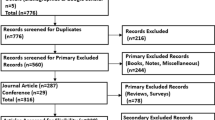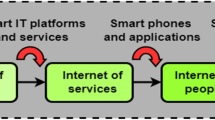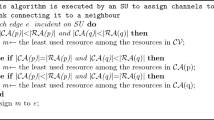Abstract
The applications and protocols conceived for mobile ad hoc networks rely on the assumption of cooperation amongst the mobile nodes because of lacking infrastructure. All nodes have to spend their precious resources (e.g. battery power, memory, computational power, and network bandwidth) for routing and packet forwarding operations for other nodes, in a cooperative way in the network. However, there are some nodes that may intentionally turn themselves to behave selfishly in order to conserve their valuable resources. The selfish behaviour of such nodes drastically reduces the desired degree of cooperation amongst the mobile nodes. Over the course of time, the non-cooperative activities of, such selfish nodes would paralyze the normal functioning of the whole network. Therefore, these types of nodes should be detected and isolated from the network, as soon as they begin to exhibit their selfish behaviour. In this paper, a dynamic trust based intrusion detection technique is presented to detect and isolate the selfish nodes from the network, where the direct trust degree based on direct communication interactions and indirect (recommended) trust degree based on the neighbours’ recommendations are taking into account to accurately judge the selfishness nature of the nodes. The results obtained throughout the simulation experiments clearly show the feasibility and effectiveness of the proposed intrusion detection technique.










Similar content being viewed by others
References
Chlamtac, I., Conti, M., & Liu, J. J. N. (2003). Mobile ad hoc networking: imperatives and challenges. Ad Hoc Networks, 1(1), 13–64.
Hoebeke, J., Moerman, I., Dhoedt, B., & Demeester, P. (2004). An overview of mobile ad hoc networks: applications and challenges. Journal-Communications Network, 3(3), 60–66.
Al-Karaki, J. N., & Kamal, A. E. (2004). Routing techniques in wireless sensor networks: A survey. IEEE Wireless Communications, 11(6), 6–28.
Buttyán, L., & Hubaux, J. P. (2003). Stimulating cooperation in self-organizing mobile ad hoc networks. Mobile Networks and Applications, 8(5), 579–592.
Chiejina, E., Xiao, H., & Christianson, B. (2015). A dynamic reputation management system for mobile ad hoc networks. Computers, 4(2), 87–112.
Rodriguez-Mayol, A., & Gozalvez, J. (2014). Reputation based selfishness prevention techniques for mobile ad-hoc networks. Telecommunication Systems, 57(2), 181–195.
Sun, Y. L., Han, Z., Yu, W., & Liu, K. R. (2006). A trust evaluation framework in distributed networks: Vulnerability analysis and defense against attacks. In Proceedings of 25TH IEEE international conference on computer communications (IEEE INFOCOM 2006) (pp. 1–13). IEEE.
Jiang, J., Han, G., Wang, F., Shu, L., & Guizani, M. (2015). An efficient distributed trust model for wireless sensor networks. IEEE transactions on parallel and distributed systems, 26(5), 1228–1237.
Perkins, C. E, & Royer, E. M. (1999). Ad hoc on-demand distance vector routing. In Proceedings of 2nd IEEE workshop on mobile computing systems and applications (WMCSA’99) (pp. 90–100). IEEE.
Michiardi, P., & Molva, R. (2002). Simulation-based analysis of security exposures in mobile ad hoc networks. In Proceedings of European wireless conference 2002: Next generation wireless networks: Technologies, protocols, services applications (pp. 15–17).
Subramaniyan, S., Johnson, W., & Subramaniyan, K. (2014). A distributed framework for detecting selfish nodes in MANET using Record-and Trust-Based Detection (RTBD) technique. EURASIP Journal on Wireless Communications and Networking, 2014(1), 205.
Sengathir, J., & Manoharan, R. (2015). Exponential reliability coefficient based reputation mechanism for isolating selfish nodes in MANETs. Egyptian Informatics Journal, 16(2), 231–241.
Kargl, F., Klenk, A., Schlott, S., & Weber, M. (2004). Advanced detection of selfish or malicious nodes in ad hoc networks. In European Workshop on Security in Ad hoc and Sensor Networks (pp. 152–165). Springer Berlin Heidelberg.
Yoo, Y., Ahn, S., & Agrawal, D. P. (2005). A credit-payment scheme for packet forwarding fairness in mobile ad hoc networks. In Proceedings of IEEE International Conference on Communications (ICC 2005) (Vol. 5, pp. 3005–3009). IEEE.
Yoo, Y., & Agrawal, D. P. (2006). Why does it pay to be selfish in a MANET? IEEE Wireless Communications, 13(6), 87–97.
Toh, C. K., Kim, D., Oh, S., & Yoo, H. (2010). The controversy of selfish nodes in ad hoc networks. In Proceedings of 12th IEEE International Conference on Advanced Communication Technology (ICACT) (Vol. 2, pp. 1087–1092). IEEE.
Gupta, S., Nagpal, C. K., & Singla, C. (2011). Impact of selfish node concentration in manets. International Journal of Wireless & Mobile Networks (IJWMN), 3(2), 29–37.
Marti, S., Giuli, T. J., Lai, K., & Baker, M. (2000). Mitigating routing misbehavior in mobile ad hoc networks. In Proceedings of the 6th ACM annual international conference on Mobile computing and networking (pp. 255–265). ACM.
Hernández-Orallo, E., Olmos, M. D. S., Cano, J. C., Calafate, C. T., & Manzoni, P. (2014). A fast model for evaluating the detection of selfish nodes using a collaborative approach in MANETs. Wireless Personal Communications, 74(3), 1099–1116.
Ferraz, L. H. G., Velloso, P. B., & Duarte, O. C. M. (2014). An accurate and precise malicious node exclusion mechanism for ad hoc networks. Ad Hoc Networks, 19, 142–155.
Shakshuki, E. M., Kang, N., & Sheltami, T. R. (2013). EAACK—A secure intrusion-detection system for MANETs. IEEE Transactions on Industrial Electronics, 60(3), 1089–1098.
Djenouri, D., Ouali, N., Mahmoudi, A., & Badache, N. (2005). Random feedbacks for selfish nodes detection in mobile ad hoc networks. In T. Magedanz, E. R. M. Madeira, & P. Dini (Eds.), Operations and Management in IP-Based Networks. IPOM 2005. Lecture Notes in Computer Science (Vol. 3751, pp. 68–75). Springer, Berlin.
Miranda, H., & Rodrigues, L. (2003). Friends and foes: Preventing selfishness in open mobile ad hoc networks. In Proceedings of 23rd IEEE international conference on distributed computing systems workshops (pp. 440–445). IEEE.
Das, V. V. (2007). IP-based credit mobile ad-hoc networks. In Proceedings of IEEE international conference on computational intelligence and multimedia applications (ICCIMA 2007) (Vol. 4, pp. 453–457). IEEE.
Demir, C., & Comaniciu, C. (2007). An auction based AODV protocol for mobile ad hoc networks with selfish nodes. In Proceedings of IEEE International Conference on Communications (ICC’07) (pp. 3351–3356). IEEE.
Wang, Y., Giruka, V. C., & Singhal, M. (2008). Truthful multipath routing for ad hoc networks with selfish nodes. Journal of Parallel and Distributed Computing, 68(6), 778–789.
Soltanali, S., Pirahesh, S., Niksefat, S., & Sabaei, M. (2007). An efficient scheme to motivate cooperation in mobile ad hoc networks. In Proceedings of IEEE Third International Conference on Networking and Services (ICNS ‘07) (pp. 98–103). IEEE.
Kumar, J. M. S. P. J., Kathirvel, A., Kirubakaran, N., Sivaraman, P., & Subramaniam, M. (2015). A unified approach for detecting and eliminating selfish nodes in MANETs using TBUT. EURASIP Journal on Wireless Communications and Networking, 2015(1), 143.
Sengathir, J., & Manoharan, R. (2015). Semi-markov Process Based Cooperation Enforcement Mechanism for MANETs. In L. Jain, H. Behera, J. Mandal & D. Mohapatra (Eds.), Computational Intelligence in Data Mining — Volume 2. Smart Innovation, Systems and Technologies (Vol 32, pp. 683–693). Springer: New Delhi.
Sengathir, J., & Manoharan, R. (2015). A futuristic trust coefficient-based semi-Markov prediction model for mitigating selfish nodes in MANETs. EURASIP Journal on Wireless Communications and Networking, 2015(1), 158.
Kaliappan, M., & Paramasivan, B. (2015). Enhancing secure routing in Mobile Ad Hoc Networks using a Dynamic Bayesian Signalling Game model. Computers & Electrical Engineering, 41, 301–313.
Mao, Y., & Zhu, P. (2015). A game theoretical model for energy-aware DTN routing in Manets with nodes’ selfishness. Mobile Networks and Applications, 20(5), 593–603.
Das, D., Majumder, K., & Dasgupta, A. (2015). Selfish node detection and low cost data transmission in MANET using game theory. Procedia Computer Science, 54, 92–101.
Zhao, D. (2006). Access control in ad hoc networks with selfish nodes. Wireless Communications and Mobile Computing, 6(6), 761–772.
Yan, L., & Hailes, S. (2008). Designing incentive packet relaying strategies for wireless ad hoc networks with game theory. In A. Miri (Ed.), Wireless Sensor and Actor Networks II. IFIP — The International Federation for Information Processing II (Vol 264, pp. 137–148). Springer: Boston.
Komali, R. S., MacKenzie, A. B., & Gilles, R. P. (2008). Effect of selfish node behavior on efficient topology design. IEEE Transactions on Mobile Computing, 7(9), 1057–1070.
Refaei, M. T., Srivastava, V., DaSilva, L., & Eltoweissy, M. (2005). A reputation-based mechanism for isolating selfish nodes in ad hoc networks. In Proceedings of 2nd IEEE annual international conference on mobile and ubiquitous systems: Networking and services (MobiQuitous 2005) (pp. 3–11). IEEE.
He, Q., Wu, D., & Khosla, P. (2004). SORI: a secure and objective reputation-based incentive scheme for ad-hoc networks. In Proceedings of IEEE wireless communications and networking conference (WCNC. 2004), (IEEE Cat. No.04TH8733) (Vol. 2, pp. 825–830). IEEE.
Cho, J. H., & Chen, R. (2013). On the tradeoff between altruism and selfishness in MANET trust management. Ad Hoc Networks, 11(8), 2217–2234.
Thorat, S. A., & Kulkarni, P. J. (2015). Opportunistic routing in presence of selfish nodes for MANET. Wireless Personal Communications, 82(2), 689–708.
Chakrabarti, C., Banerjee, A., Chakrabarti, S., & Chakraborty, A. (2015). A novel approach for non-cooperative node detection and avoidance using reputation-based scheme in mobile ad hoc network. In K. Maharatna, G. Dalapati, P. Banerjee, A. Mallick, M. Mukherjee (Eds.), Computational Advancement in Communication Circuits and Systems. Lecture Notes in Electrical Engineering (Vol 335, pp. 279–289). New Delhi: Springer.
Velloso, P. B., Laufer, R. P., Cunha, D. D. O., Duarte, O. C. M., & Pujolle, G. (2010). Trust management in mobile ad hoc networks using a scalable maturity-based model. IEEE Transactions on Network and Service Management, 7(3), 172–185.
McGibney, J., & Botvich, D. (2007). Establishing trust between mail servers to improve spam filtering. In B. Xiao, L. T. Yang, J. Ma, C. Muller-Schloer, Y. Hua (Eds.), Autonomic and Trusted Computing. ATC 2007. Lecture Notes in Computer Science, (Vol 4610, pp. 146–155). Springer.
Wang, B., Chen, X., & Chang, W. (2014). A light-weight trust-based QoS routing algorithm for ad hoc networks. Pervasive and Mobile Computing, 13, 164–180.
Velloso, P. B. B., Laufer, R. P. P., Duarte, O. C. M., & Pujolle, G. (2008). A trust model robust to slander attacks in ad hoc networks. In Proceedings of 17th IEEE International Conference on Computer Communications and Networks (ICCCN’08) (pp. 1-6). IEEE.
Kansal, A., Ramamoorthy, A., Srivastava, M. B., & Pottie, G. J. (2005). On sensor network lifetime and data distortion. In Proceedings of IEEE International Symposium on Information Theory (ISIT 2005) (pp. 6–10). IEEE.
Basu, P., & Redi, J. (2004). Effect of overhearing transmissions on energy efficiency in dense sensor networks. In Proceedings of ACM 3rd international symposium on Information processing in sensor networks—IPSN’04 (pp. 196–204). ACM.
NETWORK SIMULATOR-2.34. http://www.isi.edu/nsnam/ns/.
Hua, C., & Yum, T. S. P. (2008). Optimal routing and data aggregation for maximizing lifetime of wireless sensor networks. IEEE/ACM Transactions on Networking (TON), 16(4), 892–903.
Chen, C. L., Lee, J. W., Lin, C. Z., Chen, Y. T., Ker, J. S., & Kuo, Y. H. (2007). Generic energy-efficient geographic routing for ad-hoc wireless networks. In M. K. Denko et al. (Eds.), Emerging Directions in Embedded and Ubiquitous Computing. EUC 2007. Lecture Notes in Computer Science (Vol 4809, pp. 321–332). Springer.
Author information
Authors and Affiliations
Corresponding author
Additional information
Publisher's Note
Springer Nature remains neutral with regard to jurisdictional claims in published maps and institutional affiliations.
Rights and permissions
About this article
Cite this article
Kumar, S., Dutta, K. Trust Based Intrusion Detection Technique to Detect Selfish Nodes in Mobile Ad Hoc Networks. Wireless Pers Commun 101, 2029–2052 (2018). https://doi.org/10.1007/s11277-018-5804-4
Published:
Issue Date:
DOI: https://doi.org/10.1007/s11277-018-5804-4




